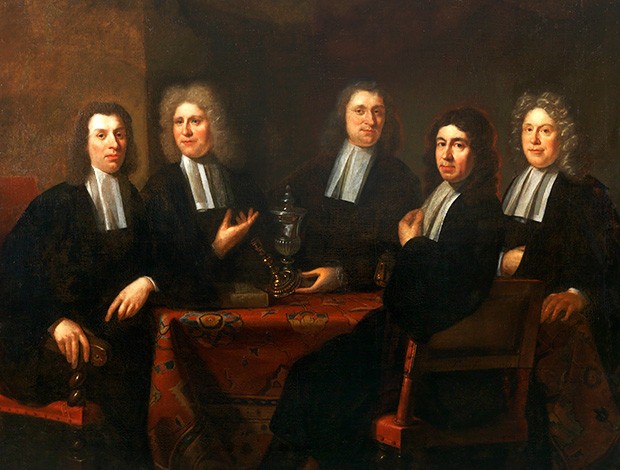Rotterdam museum acquires Nazi-looted artwork from the Max Stern estate
 “The Governors of the Amsterdam Gold and Silversmiths’ Guild” by Juriaen Pool II (1665-1745).
“The Governors of the Amsterdam Gold and Silversmiths’ Guild” by Juriaen Pool II (1665-1745).
One of 12 paintings returned to the heirs of Max Stern will be on public exhibition in a Rotterdam, Netherlands museum more than 70 years after it was relinquished by the German-Jewish art dealer during the Nazi regime.
The large-scale painting “The Governors of the Amsterdam Gold and Silversmiths’ Guild” by Juriaen Pool II (1665-1745) was purchased by the city’s Tax & Customs Museum.
The exhibition explains the history and provenance of the Dutch Old Master portrait, painted in 1701. “The Governors of the Amsterdam Gold and Silversmiths’ Guild” was part of the art collection Stern was forced to give up at the outbreak of the Second World War.
It was returned to his estate in 2011 after it was discovered in the possession of a German casino. The painting has undergone significant restoration since its acquisition by the Rotterdam museum.
The artwork’s war-time history will be detailed as part of the Tax & Customs Museum’s Justice and Confidence exhibition. As Frans Fox, the museum’s director, explains, “We can’t change history or make things right, but we can ensure that this remarkable story gets told.”
Concordia is one of three universities, alongside McGill University and Hebrew University in Jerusalem, named as the principal heirs of Stern’s estate after his death in 1987.
Clarence Epstein, Concordia’s senior director of Urban and Cultural Affairs, has led the Max Stern Art Restitution Project since its inception in 2002. He is pleased the painting and its story will be part of the Tax & Customs Museum’s public education mission.
Epstein recorded a video message that was aired in Rotterdam, at an event to announce the exhibition on June 18.
“The project’s central goal has been to reclaim the artworks stolen from Stern,” Epstein says.
“Whenever possible, we’ve also sought to have these paintings exhibited publicly, as they contribute to a deeper understanding of the losses suffered under the Nazi regime by individuals such as Max Stern.”
Epstein is also grateful for the ongoing collaboration of numerous officials in the Netherlands, including those working in art provenance research, for the role they continue to play in assisting the Stern project.
“We’ve witnessed significant progress over the past decade in the way European government and museum organizations regard the work of reclaiming looted art. We continue to count on the support of such organizations we now regard as collaborators.”
The Max Stern Art Restitution Project has also received significant assistance over the years from the Holocaust Claims Processing Office of the New York State Department of Financial Services, Interpol, U.S. Immigration and Customs Enforcement, Sotheby’s, Christie's and the Art Loss Register.
The project has succeeded in reclaiming 12 paintings that once belonged to Stern. An estimated 400 looted artworks remain in circulation.
Find out more about the Max Stern Art Restitution Project.